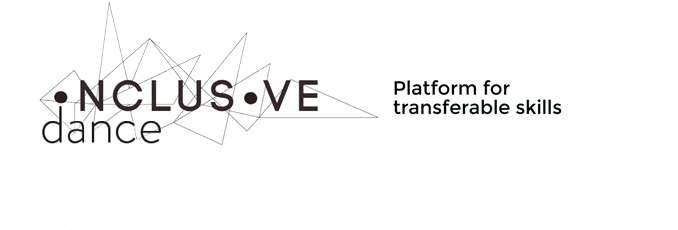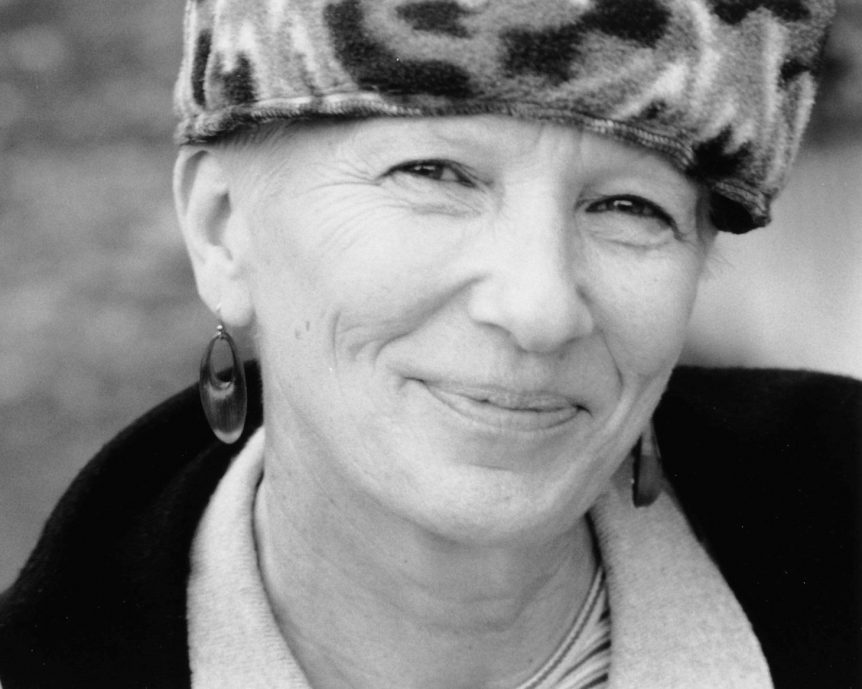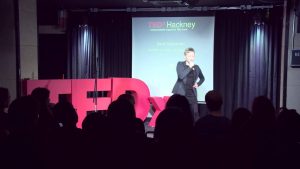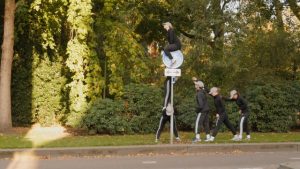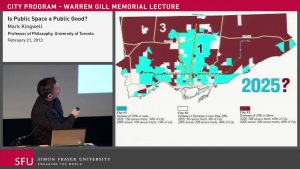by Veronika Simkova
Teri Jeanette Weikel belongs to the generation of American performers after the Post Modern movement. She studied at California Institute of the Arts and danced with various companies while also pursuing her choreographic projects. She has been working in the dance field for over 40 years. Teri is currently working at the National Dance Academy in Rome, Italy. In 2002 Teri obtained the Feldenkrais Method certification and currently works as a Feldenkrais practitioner.
“My teaching focuses on the application of the Feldenkrais Method in connection with dance practice. I have continued my research and curiosity about learning and the integration of sensation, thought and movement introducing the Feldenkrais Method in my proposals of dance workshops. My working commitment ranges from performance production to training with various kinds of groups: children, disabled persons, actors, amateurs and professional dancers,“ says Teri.
How did you find out about the Feldenkrais Method?
I was first introduced to the Feldenkrais Method® in 1976 while I was a dance student at California Institute of the Arts in Los Angeles, California. I participated in an Awareness Through Movement® class given my Meo Morales a Feldenkrais practitioner and I was completely enthralled by it. I found that I was so curious about how I was moving and how expanded my awareness had become.
How is a class conducted?
The ATM classes are group lessons which use movement as a common language for learning. The practitioner guides the lesson verbally while the participants explore the movement tasks each with his or her own timing, spatial orientation and effort. Each lesson proposes a movement pattern and the aim is to improve and become aware of the moment paths and personal organization by paying attention to oneself. There is no demonstration to follow, so there is no imitation and this condition makes it possible to learn from oneself.
Do you use dance or other somatic approaches in your classes?
It depends what I have been asked to teach.
If I am teaching the Feldenkrais Method I propose ATMs from the Feldnkrais repertory. Depending on the group of people that participate, if it’s general public, physically impaired, children, professional dancers, actors or musicians, I consider what kind of lesson to propose.
If I am teaching dance I apply the Feldenkrais Method in order to introduce a movement principle or pattern which is useful for the dance language. I usually teach a short ATM which allows the class to explore and discover their own personal organization of the principle before addressing the technical aspects of dance.
What is the sense/aim of Feldenkrais Method?
The Feldenkrais Method is an educational system which allows each person to explore and heighten their awareness through his or her own movement. There are many benefits from practicing the Method such as; better functioning of breathing, balancing, walking, coordination, the disappearance of pain and discomfort, better alignment and posture, the unfolding of creativity, a better attitude towards oneself and others.
Is it your profession or is it only a supplement to your profession as a dancer / dance teacher?
This is a tricky question. My profession is about moving and creating. I don’t conceive of being a Feldenkrais practitioner as a supplement to my profession as a dancer. I think that it is all related and inseparable one from the other.
How did you imagine your dance carrier before entering a dance school? What was so attractive about being a dancer?
I didn’t have a clear idea about what and how the dance choice would unfold for me. I only knew that dancing was what made me feel in touch with a meaning in life. I loved to move and still do. As I think back, the attraction for me was about expressing myself as fully as possible. I had grown up around dance and in many ways it was an activity that people did with joy and dedication.
Of course the desire of creating and performing was very compelling and also the idea of being successful at it was also an important aspect for me.
How did this image of future career evolve during your school years?
As I grew and developed while at school I learned so much about working with others. I also became aware that there could be many different aspects to dance, that it could develop towards other kinds of interaction with people, but that these intuitions would unfold in time, that the process of becoming a dancer, choreographer, teacher or any other activity is intimately connected in time and experience. When I left school I discovered that I was at the beginning of a path which could have many surprising turns.
Has anything shifted again thanks to the Feldenkrais Method?
Yes, many things have changed and taken on different aspects. One of the most important shifts, for me, is recognizing that everything is changing, adapting and developing constantly. That being able to work with people using movement languages is a great advantage because it is an immediate experience for the person, it includes not only the physical aspect but also the intellectual, sensory and emotional aspects of a person. It addresses the whole person. This process, for me, has brought me closer to myself and has also broken down the preconceived ideas about dance and dancers.
Is the content of your classes or the way of leading it nurtured by your active profession as a dancer?
Of course it is. Being a dancer has allowed me to explore and use myself for transmitting ideas, sensations, emotions and artistic intentions. Learning to dance made my think, made me use my mind. Dancers spend a great deal of time and energy to perceive and learn about oneself and how to work with others. I feel that my experience as a dancer has enhanced my teaching.
